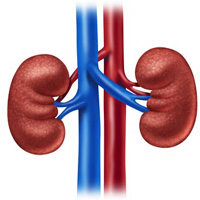 Smart Citations
Smart CitationsSee how this article has been cited at scite.ai
scite shows how a scientific paper has been cited by providing the context of the citation, a classification describing whether it supports, mentions, or contrasts the cited claim, and a label indicating in which section the citation was made.
Mini percutaneous nephrolithotomy versus retrograde flexible ureterorenoscopy in the treatment of renal calculi in anomalous kidneys
Objectives: To report our single center experience in comparing mini-percutaneous nephrolithotomy versus flexible ureterorenoscopy for management of renal stones up to 2 cm in anomalous kidneys.
Materials and methods: Records of the last 30 patients with stones less than 2 cm in anomalous kidney treated by mini-percutaneous nephrolithotomy were reviewed and compared to last 30 patients treated by flexible ureterorenoscopy.
Results: Mean stone size was significantly higher in the minipercutaneous nephrolithotomy group (17.90 mm) than in flexible ureterorenoscopy group (14.97mm) (p < 0.001). Mean operative time (80.33 min vs 56.43 min) and fluoroscopy exposure time (4.49 min vs 0.84 min) were significantly higher in the mini-percutaneous nephrolithotomy group than in the flexible ureterorenoscopy group (p < 0.001). The mean post-operative drop in hemoglobin concentration was significantly higher in the mini-percutaneous nephrolithotomy group (0.47 gm versus 0.2 gm) (p < 0.001). Stone free rate after 12 weeks follow up was not statistically significant between the 2 groups (90% in minipercutaneous nephrolithotomy vs 80% in flexible ureterorenoscopy) (FEp = 0.472).
Conclusions: Both modalities were found to be safe and effective for treatment of stones less than 2 cm in anomalous kidneys.
Downloads
How to Cite
PAGEPress has chosen to apply the Creative Commons Attribution NonCommercial 4.0 International License (CC BY-NC 4.0) to all manuscripts to be published.

 https://doi.org/10.4081/aiua.2021.2.167
https://doi.org/10.4081/aiua.2021.2.167





